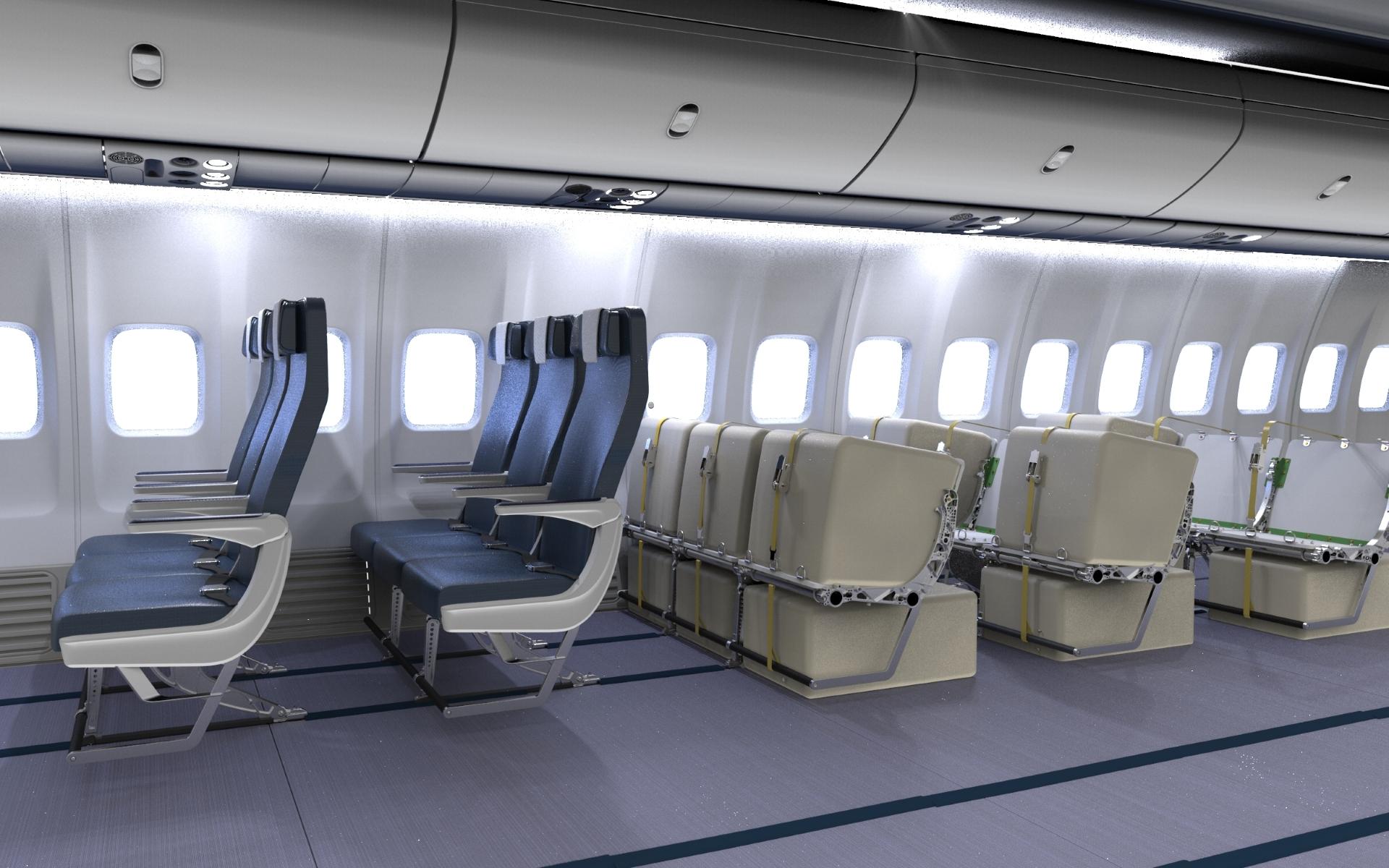
Haeco Cabin Solutions, responding to a surge in cargo demand as passenger-aircraft belly capacity has been reduced during the coronavirus pandemic, is fast-tracking development of several products designed for carrying freight in passenger cabins.
Two of the products can be used without removing seats: one goes on existing economy seats, and one goes in rows between seats. Each can carry 240 lb., the North Carolina-based Haeco Group subsidiary said. A third product installs in economy-seat tracks and can handle 500 lb., while, and a fourth, “palletized” unit sits on the cabin floor and can take up to 1,000 lb. The four units can be mixed on a single aircraft to optimize capacity while ensuring load distribution complies with aircraft manufacturer guidance.
“These systems were the result of a post-COVID-19 brainstorming session we had to examine what we could do to help airlines maintain revenue and optimize yields,” a Haeco spokesperson told Aviation Daily.
“We saw that airlines were starting to use passenger flights solely for cargo. Also, at the time we were beginning to see the need for social distancing.
“We felt that if we could develop a solution where airlines could carry cargo and passengers simultaneously, this could help them optimize passenger vs cargo yield, use packages to distance passengers, and maintain proper weight and balance requirements.”
The products are being offered to customers now, and Haeco Cabin is targeting a supplemental type certificate (STC) timeline of four weeks, starting with the FAA. The company said it can develop STCs for all of the major air transport mainline and regional aircraft.
“We are pleased with the strong interest we have already seen from airlines and leasing companies and delighted that we can offer a quick, cost-effective solution to maximize yields during this challenging time,” Haeco Cabin president Doug Rasmussen said.
The spokesperson added that Haeco is in discussion with at least 50 airlines globally and that demand is rising “rapidly.”
News of Haeco’s offering comes as passenger airlines increasingly turn to cargo-only flights to help generate revenue and keep goods moving. The global COVID-19 outbreak has forced airlines to ground most passenger flights due to plummeting demand. While the Chinese domestic market has begun to bounce back as cases of COVID-19 there subside, most other airlines have cut some or all of their scheduled flights.
One consequence is a loss of corresponding belly cargo capacity, which has left supply chains scrambling to keep goods moving. Many airlines have stepped in with all-cargo flights—some working within the confines of passenger cabins, while others, such as Air Canada, have removed seats from some aircraft to help better replicate a freighter.
In most cases, small parcels are placed in the main deck and fastened to the seats by numerous makeshift methods such as nets and tie-downs. Operating a passenger-configured aircraft as a freighter is more complex than simply removing seats or stacking boxes on available surfaces, however. Regulators and aircraft manufacturers have stepped in with guidance aimed at ensuring operations remain safe.
For instance, recent guidance issued by the U.S. FAA reminds operators that, unlike cargo compartments, passenger cabins do not have smoke detection systems outside of lavatories. This means a flight attendant or other trained company staffer must act as a human fire-warning system. In addition, fire-suppression tools in the cabin must remain accessible at all times, which limits where cargo can be placed.
U.S. passenger airlines also must continue to follow revised, more restrictive pilot flight-and-duty-time rules introduced in 2014, but cargo airlines are exempt. If passenger operators want to apply the all-cargo duty times to their temporary freight operations, they must have the limits approved in their now-required fatigue risk management plans mandated by the 2014 rule.






